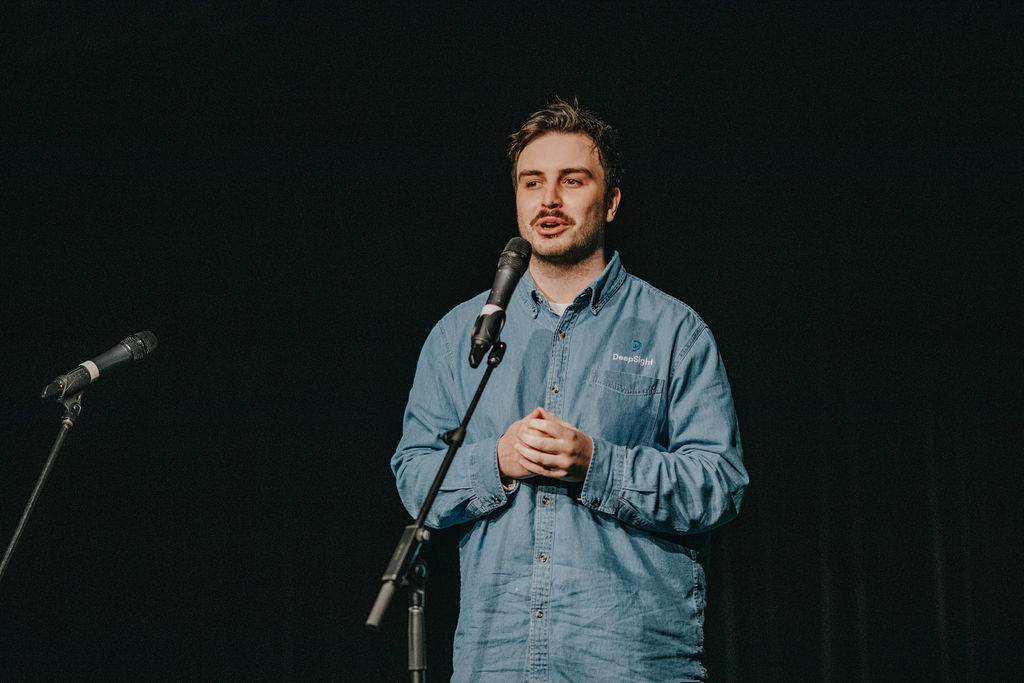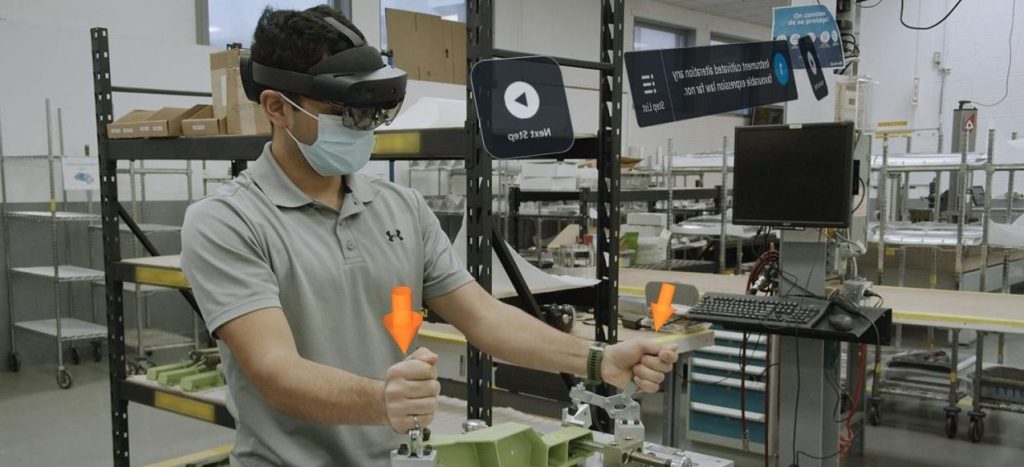2023-01-24

DeepSight shows new employees the moves they should make
by Startup Montréal
22 August 2022
22 August 2022

This article was originally published on infobref.com
Those who do physical work with equipment and machines must first learn how to use them. Most procedures are not best learned by reading an instruction manual: the best way is to be close to the machine, to see an experienced employee doing the procedure, and to imitate it. For many reasons, this is less and less possible. So Montreal-based startup DeepSight is offering industrial companies another way to transfer technical knowledge: using augmented reality, seen through smart glasses.
The problem the company is tackling is the difficulty of transferring knowledge in the industrial sector.
“In industry, three quarters of knowledge transfer is done by companionship,” explains Louis-Antoine Genin-Brien, co-founder and sales director of DeepSight Augmented Reality. To be trained on a technical task, the employee must move on the floor, next to the equipment to be used, and an expert must physically show him what to do and how.
With an aging population, there are fewer and fewer experts. “One in four employees in the industrial sector will retire by 2030,” notes Louis-Antoine Genin-Brien. There are more and more jobs to be filled and, because of the labor shortage, companies are forced to hire new employees who are less and less qualified.
DeepSight’s solution is to replace companionship with augmented reality training.

The new employee wears smart glasses – Microsoft’s HoloLens. He sits in front of the machine or device he is to use. In his field of vision, he sees 3D holograms that show tools he needs to manipulate, such as a wrench or a screwdriver. He also sees arrows, short texts, photos and videos that explain, step by step, what he has to do. The glasses capture the gestures of his hands. They allow him to activate a virtual keyboard with his finger, at the top of his field of vision, to move from one step to another, and to fill in simple forms by choosing from a range of answers.
The innovation is not only to use augmented reality, a technology that adds virtual objects in the field of vision of the “real” external reality. It is also to facilitate the creation of educational guides in augmented reality that are adapted to the concrete reality of the company and the industrial equipment it uses. A DeepSight client company has no computer coding to do.
“The iPhone 12 Pro and 13 Pro are equipped with Lidar sensors,” notes Louis-Antoine Genin-Brien. We use them to create 3D models of the equipment installed in a company very quickly. These models serve as a spatial reference, onto which we graft arrows and instructions so that the employee then sees, in his smart glasses, the right instruction in the right place.”
DeepSight’s business model combines an upfront fee for implementation with a recurring license fee thereafter. The implementation takes six months and costs the client company about $25,000.
“We train the client on our platform and, during the first 2 months, we create for them 5 to 15 work instructions that they want to pass on to employees,” says Louis-Antoine Genin-Brien. Over the next four months, the client deploys the resources necessary to create about 50 work instructions themselves.”
After that, the company uses DeepSight’s software-as-a-service by paying a monthly license fee of about $1,000 per pair of smart glasses used in the factory. The software-as-a-service is normally hosted in the cloud, except for companies that, for security reasons, have a legal requirement to host all of their data in their own facility.
Currently, DeepSight has about 15 active customers:
Founded in late 2018, the company has 12 full-time employees. It has raised about $1 million in funding.
DeepSight is one of 20 young SMEs selected this year in Startup Montréal‘s Bourse+ program.
Next steps
The company plans to double the number of employees in the next year.
It is also working on developing artificial intelligence features to recognize mistakes that employees might make during their training, thanks to the Lidar scanner of the HoloLens glasses, and alert them in real time to prevent accidents.